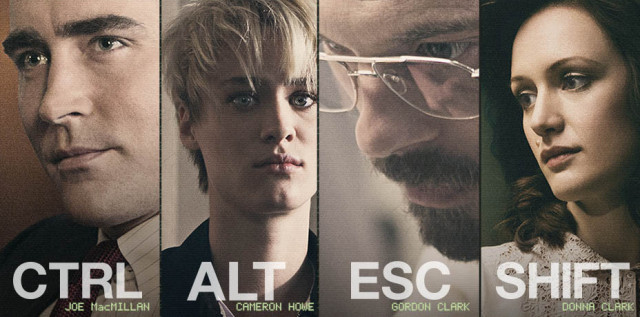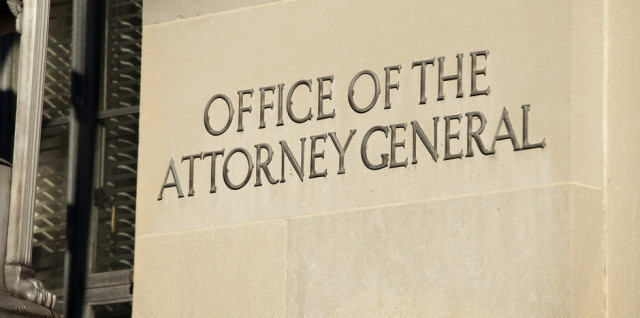Driverless Money by George Selgin
Last week I was contemplating a post having to do with driverless cars when, wouldn’t you know it, I received word that the Bank of England had just started a new blog called Bank Underground, and the first substantive post on it had to do with — you guessed it — driverless cars.
As it turned out, I needn’t have worried that Bank Underground had stolen my fire. The post, you see, was written by some employees in the Bank of England’s General Insurance Supervision Division, whose concern was that driverless cars might be bad news for the insurance industry.
The problem, as the Bank of England’s experts see it, is that cars like the ones that Google plans to introduce in 2020 are much better drivers than we humans happen to be — so much better, according to research cited in the post, that “the entire basis of motor insurance, which mainly exists because people crash, could … be upended.”
Driverless cars, therefore, threaten to “wipe out traditional motor insurance.”
It is, of course, a great relief to know that the Bank of England’s experts are keeping a sharp eye out for such threats to the insurance industry. (I suppose they must be working as we speak on some plan for addressing the dire possibility — let us hope it never comes to this — that cancer and other diseases will eventually be eradicated.)
But my own interest in driverless cars is rather different. So far as I’m concerned, the advent of such cars should have us all wondering, not about the future of the insurance industry, but about the future of…the Bank of England, or rather of it and all other central banks.
If driverless cars can upend “the entire basis of motor insurance,” then surely, I should think, an automatic or “driverless” monetary system ought to be capable of upending “the entire basis of monetary policy,” as such policy is presently conducted.
And that, so far as I’m concerned, would be a jolly good thing.
Am I drifting into science fiction? Let’s put matters in perspective. Although experiments involving driverless or “autonomous” cars have been going on for decades, until as recently as one decade ago, the suggestion that such cars would soon be, not only safe enough to replace conventional ones, but far safer, would have struck many people as fantastic.
Consider for a moment the vast array of contingencies such a vehicle must be capable of taking into account in order to avoid accidents and get passengers to some desired destination. Besides having to determine correct routes, follow their many twists and turns, obey traffic signals, and parallel park, they have to be capable of evading all sorts of unpredictable hazards, including other errant vehicles, not to mention jaywalkers and such.
The relevant variables are, in fact, innumerable. Yet using a combination of devices tech wizards have managed to overcome almost every hurdle, and will soon have overcome the few that remain.
All of this would be impressive enough even if human beings were excellent drivers. In fact, they are often very poor drivers indeed, which means that driverless cars are capable, not only of being just as good, but of being far better — 90 percent better, to be precise, since that’s the percentage of all car accidents attributable to human error.
Human beings are bad drivers for all sorts of reasons. They have to perform other tasks that take their mind off the road; their vision is sometimes impaired; they misjudge their own driving capabilities or the workings of their machines; some are sometimes inclined to show off, while others are dangerously timid. Occasionally, instead of relying on their wits, they drive “under the influence.”
Central bankers, being human, suffer from similar human foibles. They are distracted by the back-seat ululations of commercial bankers, exporters, finance ministers, and union leaders, among others. Their vision is at the same time both cloudy and subject to myopia.
Finally, few if any are able to escape altogether the disorienting influence of politics. The history of central banking is, by and large, a history of accidents, if not of tragic accidents, stemming from these and other sorts of human error.
It should not be so difficult, then, to imagine that a “driverless” monetary system might spare humanity such accidents, by guiding monetary policy more responsibly than human beings are capable of doing.
How complicated a challenge is this? Is it really more complicated than that involved in, say, driving from San Francisco to New York? Central bankers themselves like to think so, of course — just as most of us still like to believe that we are better drivers than any computer.
But let’s be reasonable. At bottom central bankers, in their monetary policy deliberations, have to make a decision concerning one thing, and one thing only: should they acquire or sell assets, and how many, or should they do neither?
Unlike a car, which has numerous controls — a steering wheel, signal lights, brakes, and an accelerator — a central bank has basically one, consisting of the instrument with which it adjusts the rate at which assets flow into or out of its balance sheet. Pretty simple.
And the flow itself? Here, to be sure, things get more complicated. What “target” should the central bank have in mind in determining the flow? Should it consist of a single variable, like the inflation rate, or of two or more variables, like inflation and unemployment? But the apparent complexity is, in my humble opinion, a result of confusion on monetary economists’ part, rather than of any genuine trade-offs central bankers face.
As Scott Sumner has been indefatigably arguing for some years now (and as I myself have long maintained), sound monetary policy isn’t a matter of having either a constant rate of inflation or any particular level of either employment or real output. It’s a matter of securing a stable flow of spending, or Nominal GNP, while leaving it to the marketplace to determine how that flow breaks down into separate real output and inflation-rate components.
Scott would have NGDP grow at an annual rate of 4-5 percent; I would be more comfortable with a rate of 2-3 percent. But this number is far less important to the achievement of macroeconomic stability than a commitment to keeping the rate — whatever it happens to be — stable and, therefore, predictable.
So: one goal, and one control. That’s much simpler than driving from San Francisco to New York. Heck, it’s simpler than managing the twists and turns of San Franscisco’s Lombard Street.
And the technology? In principle, one could program a computer to manage the necessary asset purchases or sales. That idea itself is an old one, Milton Friedman having contemplated it almost forty years ago, when computers were still relatively rare.
What Friedman could not have imagined then was a protocol like the one that controls the supply of bitcoins, which has the distinct advantage of being, not only automatic, but tamper-proof: once set going, no-one can easily alter it. The advantage of a bitcoin-style driverless monetary system is that it is, not only capable of steering itself, but incapable of being hijacked.
The bitcoin protocol itself allows the stock of bitcoins to grow at a predetermined and ever-diminishing rate, so that the stock of bitcoins will cease to grow as it approaches a limit of 21 million coins.
But all sorts of protocols may be possible, including ones that would adjust a currency’s supply growth according to its velocity — that is, the rate at which the currency is being spent — so as to maintain a steady flow of spending, à la Sumner. The growth rate could even be made to depend on market-based indicators of the likely future value of NGDP.
This isn’t to say that there aren’t any challenges yet to be overcome in designing a reliable “driverless money.” For one thing, the monetary system as a whole has to be functioning properly: just as a driverless car won’t work if the steering linkage is broken, a driverless monetary system won’t work if it’s so badly tuned that banks end up just sitting on any fresh reserves that come their way.
My point is rather that there’s no good reason for supposing that such challenges are any more insuperable than those against which the designers of driverless cars have prevailed. If driverless car technology has managed to take on San Francisco’s Lombard Street, I see no reason why driverless money technology couldn’t eventually tackle London’s.
What’s more, there is every reason to believe that driverless money would, if given a chance, prove to be far more beneficial to mankind than driverless cars ever will.
For although bad drivers cause plenty of accidents, none has yet managed to wreck an entire economy, as reckless central bankers have sometimes done. If driverless monetary systems merely served to avoid the worst macroeconomic pileups, that alone would be reason enough to favor them.
But they can surely do much better than that. Who knows: perhaps the day will come when, thanks to improvements in driverless monetary technology, central bankers will find themselves with nothing better to do than worry about the future of the hedge fund industry.









